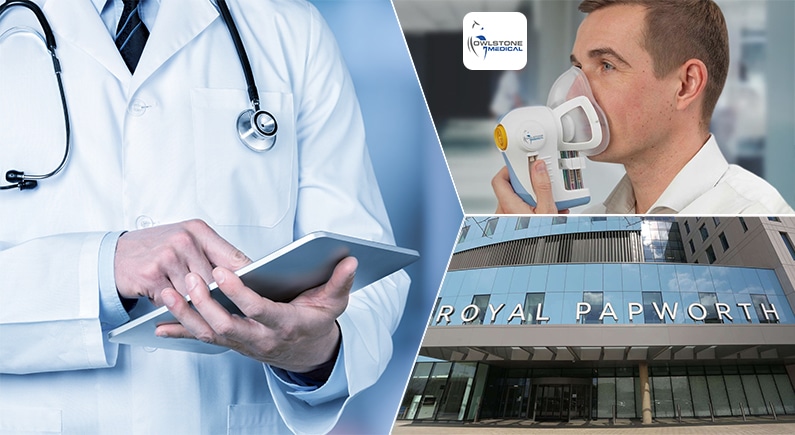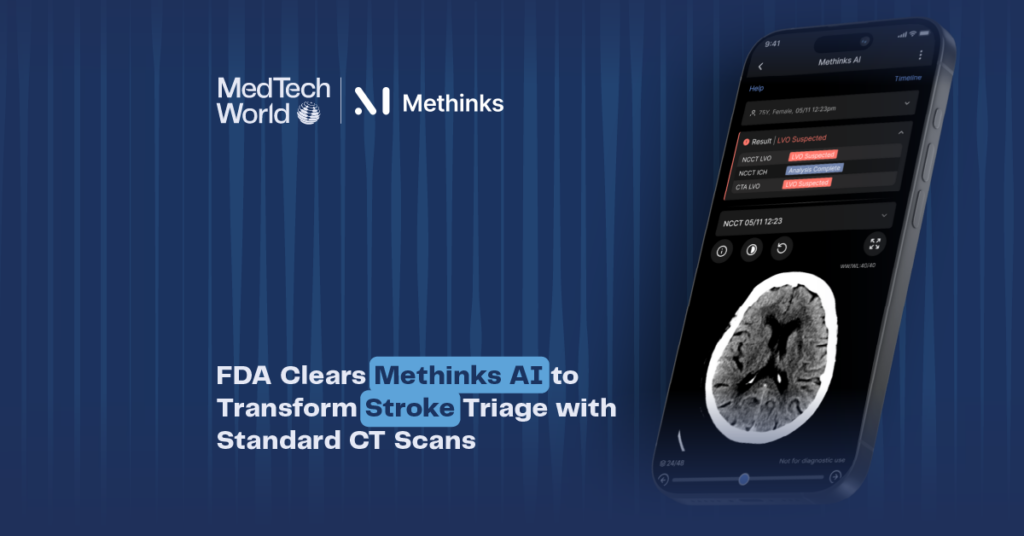
Michael Joe Cini
5th September 2022
Lung Cancer Diagnoses: Towards Earlier Detection
A clinical trial directed towards earlier lung cancer diagnoses has begun at Royal Papworth Hospital, Cambridge. Using technology from Cambridge Science Park-based Owlstone Medical, the clinical trial aims to test if ethanol detected in exhaled breath can be used for the early diagnosis of lung cancer.
50 volunteers, of which 25 are healthy and do not have lung cancer, are recruited. Both the healthy volunteers and the ones with lung cancer are intravenously injected with a liquid solution containing a metabolite probe. When it reaches the lung, it reacts with the tumour, causing the release of ethanol.
The volunteers are then asked to breathe at regular intervals into a mask which collects the ethanol for laboratory analysis. The mechanism behind this is the reaction between glucuronidase, an enzyme around the tumour cells, and the exogenous Volatile Organic Compound (eVOC) probe. The glucuronidase in lung cancer acts on the eVOC probe, releasing the ethanol which can be detected in breath.
According to Cambridge Independent, the Co-founder and CEO at Owlstone Medical, Billy Boyle, said: “The device captures the sample and all the chemicals in the breath, and that is then sent off to analyse in the lab and that analysis happens at the software level.” Both the collecting mask and eVOC were developed by Owlstone Medical, a company which has been involved in multiple trials with its Breath Biopsy technology.
This is an exciting and innovative avenue for detecting lung cancer. However, it has its shortcomings and needs further development, as the current method requires a lot of equipment, an intravenous injection, and patients breathing into the mask several times over a few hours.
Earlier Methods and The Evolution of Lung Cancer Diagnoses
Over the years, many methods of diagnosing lung cancer have been discussed, such as radiographic screening and diagnosis, sputum examination, bronchoscopy and lung tissue biopsy (the gold standard). However, these methods have their limitations. For instance, even though white light bronchoscopy (WLB) is the most used diagnostic tool for obtaining a definite histological diagnosis of lung cancer, it has significant diagnostic limitations for pre-malignant lesions. These lesions are composed of a few layers of cells with a thickness of 0.2–1 mm and a diameter of a few millimetres, making them hard to be visually detected.
Another proposed method of diagnosing lung cancer is by using biomarkers. Lung cancer results from multistage carcinogenesis with gradually increasing genetic and epigenetic changes. Screening for the characteristic biomarkers could enable the diagnosis of lung cancer at its early stage. This seemingly new method could be a means to overcome the barriers to early lung cancer screening and diagnosis. However, there are still some concerns about this method.
Researchers are in a continual search for better, more sensitive methods for early diagnoses of lung cancer.
Lung cancer is the leading cause of cancer-related deaths in developed countries. Every year, roughly 1.8 million new cases of lung cancer are diagnosed worldwide. In 2012, about 1.6 million people died of lung cancer. In 2020, it was evaluated that about 30,000 Canadians will be diagnosed with lung cancer, with a total of 21,000 deaths. It is projected that the number of lung cancer deaths will increase to 3 million in 2035. With lung cancer topping the list, the global cancer burden is estimated to double by 2050.
In the United Kingdom, lung cancer is the third most common cancer, with approximately 48,000 people diagnosed each year. It is the biggest cancer killer, as the 5-year survival is only 16% in the UK. The main reason for the poor prognosis is that people do not develop symptoms until the disease is advanced and harder to treat or cure. 75% of patients are diagnosed at an advanced stage when treatment is unlikely to be successful.
The currently used diagnostic tools, including different types of imaging complemented with a pathological assessment of biopsies, do not enable diagnosis at the early stage of the disease. Therefore, searching for new methods to diagnose lung cancer early and accurately is crucial, especially in screening high-risk populations, like smokers, toxic occupational places, exposure to fumes, and others.
TAKE PART IN MED-TECH WORLD 2022
It is now estimated that the global digital health market will increase to around $640 billion by 2026. Through our expertise coupled with optimized networking, we will ensure that both investors and startups are on the ground floor of this health revolution. The event which is organized and curated alongside a team of doctors, attracts legislators and policymakers, medical professionals, and investors from across the world, addresses the opportunities and challenges driving this million-dollar forum.




